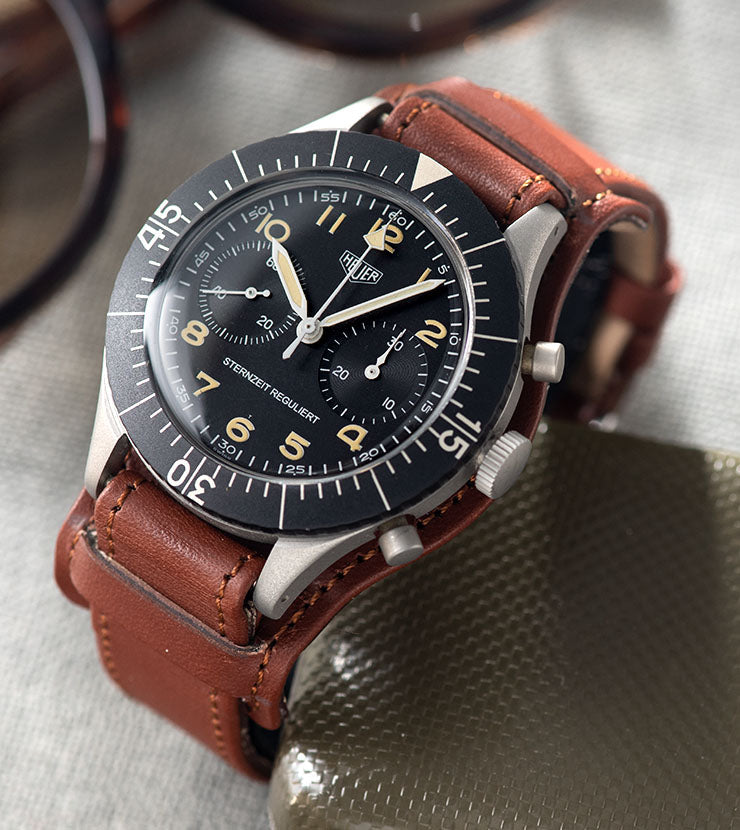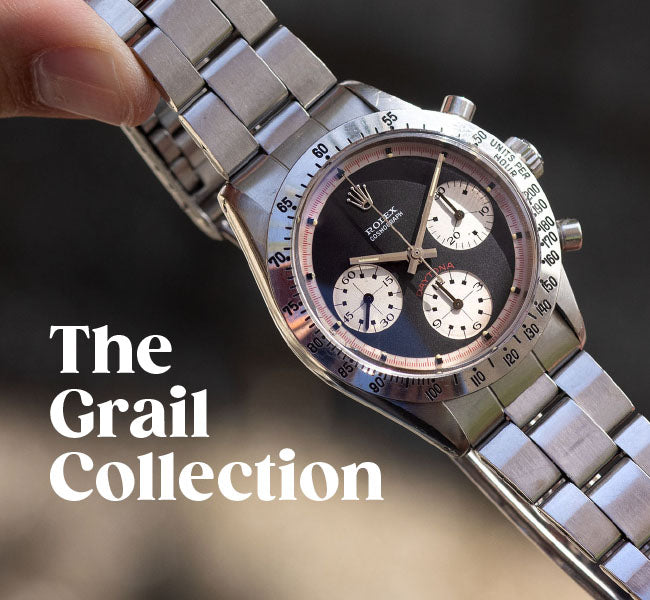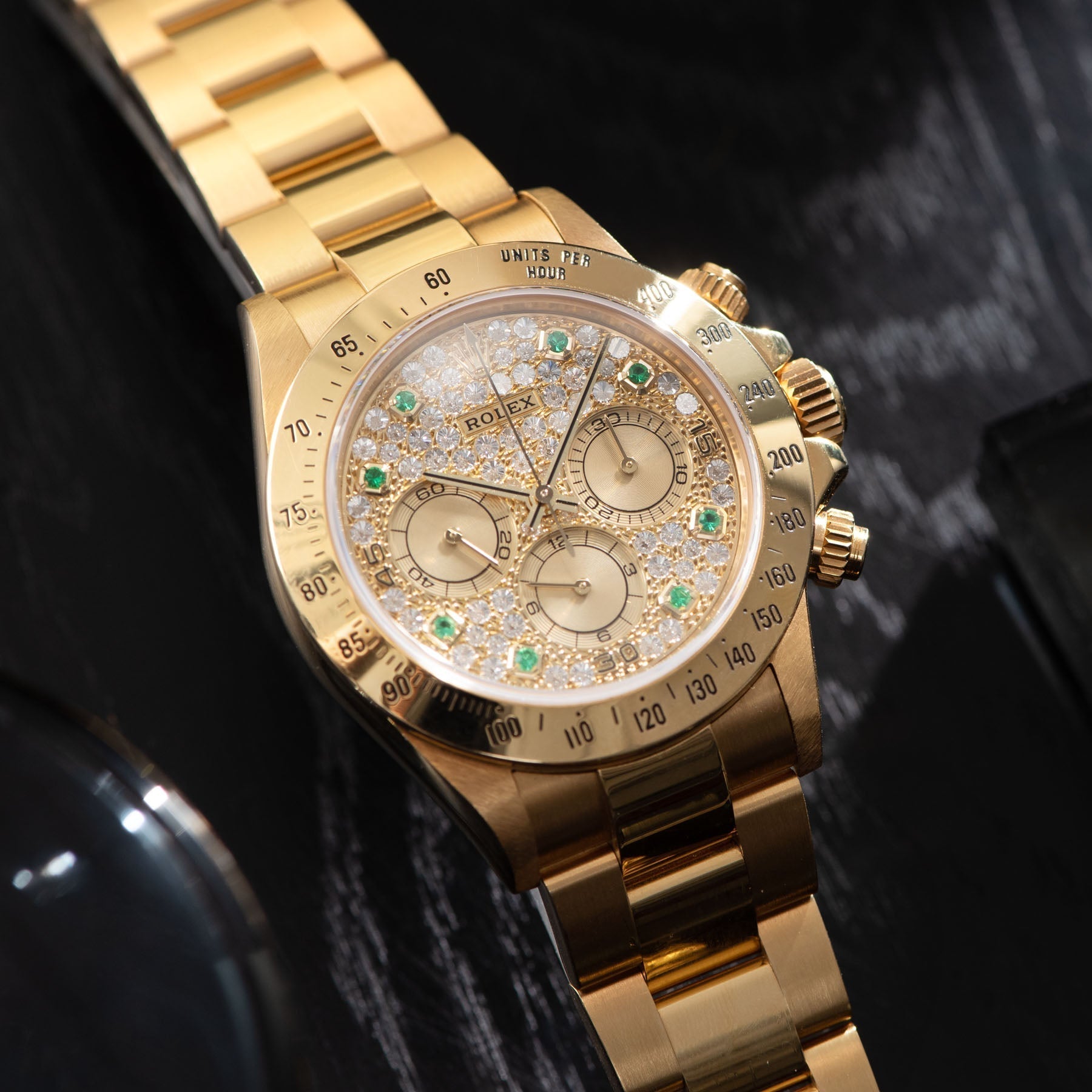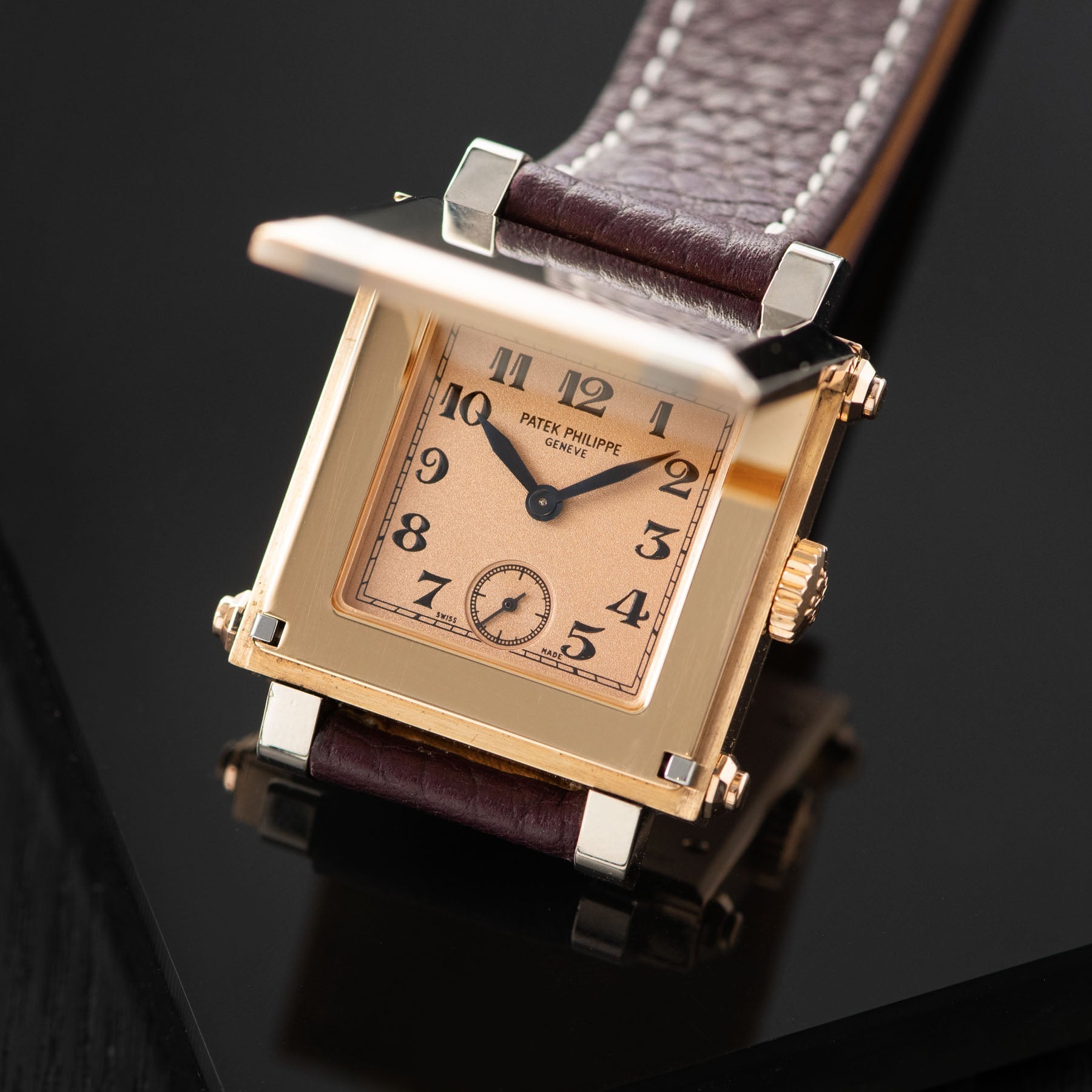
The Heuer Bundeswehr 1550SG Chronographs – More Than A Famous Strap
Whether you are a military watch collector or like the cool aesthetic pioneered by Mr Paul Ranston, the bund strap is a classic way to wear your watch. Like most stylish watches and accessories, however, the history of the bund strap is far from being simply a stylish way to wear you watch. It is, in fact, a practical element of the tool watches that were issued to German pilots in the 1960s. The bund strap is essentially a three-part strap that combines the two pieces of a regular buckle strap with a thick leather pad that sits between the case back and the wrist.

During the era in which the pilots wore these watches, the temperature in the cockpit could travel between freezing cold and boiling hot, making the presence of the watch on the wrist quite uncomfortable and even dangerous in extreme cases. By the 1970s, though, style icons such as Paul Ranston (on his legendary exotic dial 6239), Steve McQueen (on his Hanhart) and Miles Davis (on his Navitimer) had adopted the look and were wearing the straps as a style statement…although maybe Davis did need a bund strap due to his pioneering of cool jazz!

Today we are looking at the watches that made the straps famous. Bundeswehr, literally translates to armed forces but is generally used to refer to the West German Federal Defence Force. The watches were initially made by Leonidas before the brand was bought by Heuer, who then supplied the watches under their own moniker as reference 1550 SG. The watches were flyback chronos based on Valjoux movements in large cases with bold painted Arabic numerals. The dials had two sub-registers, one at nine o’clock that displayed running seconds and the opposite sub-register showing a thirty-minute chronograph counter.

The Italian Job
It’s worth noting that the early watches made my Leonidas were also issued to other forces including the Italian Air Force. In the 1960s the Valjoux calibre 222 driven flyback chronos were given the reference CP2, which was the code for the Italian forces specification for a wristwatch. There was also a CP1 spec for watches under 40mm, which Leonidas also produced, but the 43mm CP2 is the most sought after of the two.
Both the Air Force and the Army issued the watches and each had different caseback engravings. E.I. signed case backs signify that the watches issued to the Esercito Italiano, which is the Italian Army. There were also A.M.I. markd watches which were issued to Aeronautica Militaire Italiano, the Italian Air Force. Watches marked E.I. were normally worn by aviators within the army, such as helicopter pilots.

West German Defence
Being so close to the Soviet border and also due to it being the lead NATO partner, the Bundeswehr was one of the best equipped forces. The Heuer watches were truly built to last, measuring an impressive 43mm across and 13mm thick in steel two-piece cases. The watches had two chronograph pushers and a large winding crown, important for a pilot’s watch. The Heuer watches featured the Valjoux calibre 230, which when fitted with a dial was fitted from the front of the case, like other military spec watches.

The flyback feature was important as its instantaneous reset and continuation allowed for the accurate measuring of consecutive events, meaning the stopwatch didn’t have to be stopped each time. The most eye-catching detail, maybe aside from the large hour markers, is the thick bezel. The big arrow at 12 o’clock and Arabic quarters allowed the wearer to measure elapsed time and be able quickly read it.

Easy Reading – The Heuer 1550.
One of the tell-tale signs that a watch was issued (as some were produced for the civilian market) is the presence of ‘3H’ on the dial in red within a red circle. This signifies the presence of tritium on the dial, or Hydrogen 3 to use its scientific name (3H being the scientific symbol).
As has been well documented by Heuer expert Jeff Stein at onthedash.com, there are in fact four variations of the ‘3H’ dials on the Heuer 1550s and across the model’s history five different versions of dial including examples with a small ‘T’ above the 6 numeral and one very interesting model marked ‘STERNZEIT REGULIERT’…
The Heuer STERNZEIT REGULIERT 1551
The Sternzeit Reguliert had a slightly different reference number, 1551 and was regulated for something called sidereal time. Literally translated it means ‘star time regulated’ and therein lies the cue in relation to the stars. Here’s the science lesson bit! Sidereal time is used by astronomers to locate celestial objects. In simple terms, sidereal time measures the time it takes for earth to rotate relative to the stars, not the sun. Each time the earth rotates on its axis, it also moves along its orbit by around 1.5 million miles.
Therefore, to allow for this orbital movement, a solar day is measured by one full rotation plus around four minutes, to ensure the sun is always at exactly the same point every day at, say, midday because the time it takes the earth to rotate on its axis and the time it takes to orbit the sun are different. The actual time it takes for the earth to rotate is 23 hours, 56 minutes and 4.1 seconds. This is a sidereal day. As the stars are so far away, they are in the same place each time the Earth completes a single rotation.
So why did the Bundeswehr need watches regulated to sidereal time? When setting artillery courses, the forces used sidereal time and a theodolite to calculate exact courses for missiles. Sidereal time was viewed as a much more method for knowing exactly where you are to determine the exact direction and distance to send your bombs or missiles. The theodolite was essential for determining the launch angle but understanding the exact position and compensation was key to accurate flight of the missile. Interestingly, we have discovered a Heuer Sternzeit Reguliert that comes complete with documents and equipment that would have been issued to military personnel.

The leather document holder (with Bundeswehr inventory numbers on it) contains a celestial map and a pair of bund-issue sunglasses. Also present in the folder is a booklet for the School of Rockets and Artillery that was supplied by the surveying service that includes guidance on astronomical direction and location using a theodolite. The second booklet is a Astronomical Yearbook for Troop Surveying that includes details on sidereal time and moon phases amongst other information. Both are in German language. Due to the specialist nature of these watches they are accordingly very rare and highly sought after by collectors.
Bulang Loves Heuer Bund watches
“We are delighted to be offering a number of beautiful condition Bundeswehr-issued Heuer chronos and a super-cool early Italian-issued Leonidas watch. I don’t believe a ‘drop’ such as this has happened for a long time and I am delighted that we have been able to source such am incredible selection and range for you guys. Many of these watches are on their original Bund straps and the quality of what we are offering is astonishing. I have to, of course, make special mention of the incredible ‘full package’ Sternzeit Reguliert 1551. This is a watch with a very special set of accompanying paraphernalia that helps put the watch and its fascinating regulation into context. All these watches ooze military cool with their strong 43mm cases, bold dials and striking bezels. If you love military chronographs, as the saying goes – we have you covered!” – Bernard Bulang, Founder.










